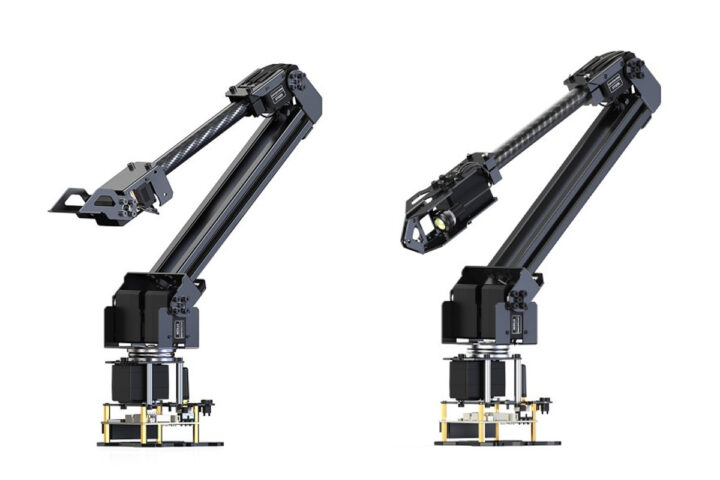Reading view
Waveshare Development Boards Feature RP2350 with 100 Mbps Ethernet or 1.14-Inch LCD
TANGO-7010 Series Featuring Intel 12th Gen i3 to i9 Cores and Triple 2.5GbE Ports
SparkFun introduces Quadband GNSS RTK Breakout board with Quectel LG290P module for high-precision navigation

SparkFun has released the Quadband GNSS RTK Breakout featuring the Quectel LG290P module designed for high-precision real-time kinematic (RTK) applications. It supports GPS, GLONASS, Galileo, BDS, QZSS, and NavIC constellations, with the ability to simultaneously receive signals from L1, L2, L5, and L6/E6 frequency bands. The module includes support for SBAS augmentation systems (e.g., WAAS, EGNOS, GAGAN) and PPP services (e.g., BDS PPP-B2b, QZSS CLAS), delivering reliable positioning with fast convergence times for precision navigation tasks. The breakout board offers a compact design (43.2 x 43.2mm) and multiple expansion options including 24 PTH pins, dual 4-pin JST Qwiic connectors, three UART interfaces, a USB-C connector, and additional PTH pins for BlueSMiRF/Serial-to-UART. With its RTK support and advanced GNSS capabilities, the board is ideal for applications requiring high-accuracy positioning and robust navigation performance. Previously, we covered several GNSS boards including the SparkFun GNSS L1/L5, u-blox EVK-LEXI-R10, and Conexio Stratus Pro and [...]
The post SparkFun introduces Quadband GNSS RTK Breakout board with Quectel LG290P module for high-precision navigation appeared first on CNX Software - Embedded Systems News.
AMDXDNA Driver For Ryzen AI Now Ready To Appear In The Linux Kernel
Virtual CPUFreq Driver Coming With Linux 6.13 For Better Power/Performance Within VMs
Linux 6.13 Will Report The Number Of Hung Tasks Since Boot
Mitigating a DoS attack with GoAccess and Cloudflare

In this off-topic post, I’m going to discuss some behind-the-scenes “fun” that may happen when managing the web server used to host the CNX Software website. From time to time, the server becomes unreachable, but I can still access its console, and notice a very high CPU load (over 100) on a VPS with four cores, while the CPU load is typically 0.5 to 2 under normal circumstances. That’s usually due to a DoS (denial of service), DDoS (distributed denial of service), or some bug I can’t identify. An easy way to solve this issue is to log in to Cloudflare and set the “Under Attack Mode” to on. It will show all visitors a JavaScript challenge the first time they visit the website, and the CPU usage typically drops back to normal level within a minute or so. That means I can access my website and so do regular [...]
The post Mitigating a DoS attack with GoAccess and Cloudflare appeared first on CNX Software - Embedded Systems News.
FreeBSD 14.2-RC1 Brings Install Image Improvements
Compulab’s UCM-iMX95 with NXP i.MX 95 Processor, Real-Time Cortex-M7, and eIQ Neutron NPU
Milk-V Launches MILK-V Megrez PC, Starting at $199.00
Microsoft Continues "Demikernel" Development LibOS For Kernel-Bypass I/O
IBM Power11 CPUs Launching In 2025 - Linux 6.13 Preps KVM Nested Guests For Power11
9elements Takes Over Intel 1st Gen Xeon Scalable "Skylake" Support Within Coreboot
Wine 9.22 Enables Wayland Driver By Default
KDE Plasma 6.3 Sees More Feature Work, One More Crash Fix For KWin
invisCAM A Compact 2MP Camera for Low Light and Low Power Applications
Coin-sized ESP32-H2-WROOM-07 RISC-V Module with BLE, Thread, and Zigbee Support for $2.13
Waveshare RoArm-M2 ESP32 robotic arms offer four degrees of freedom, various servo options

Waveshare has recently launched the RoArm-M2-S and RoArm-M2-Pro ESP32 robotic arms with four degrees of freedom, or 4-DOF for short. The main difference is that the RoArm-M2-S is equipped with standard servos, while the RoArm-M2-Pro features all-metal ST3235 bus servos, adding more durability and performance. Designed for educational and robotics applications, the 4-DOF RoArm-M2 is sturdy yet lightweight, built using carbon fiber and aluminum alloy. It can handle payloads up to 0.5kg and has a workspace diameter of 1 meter. The arm offers high precision with a 12-bit magnetic encoder and dual-drive technology for improved torque and stability. On top of that, it features a 12-bit magnetic encoder and dual-drive technology for improved torque and stability. Other features include a 360° omnidirectional base and support for both wireless (WiFi, ESP-NOW) and wired (USB) control. These features make this device suitable for various applications including industrial automation, education, research, and DIY robotics projects. Waveshare [...]
The post Waveshare RoArm-M2 ESP32 robotic arms offer four degrees of freedom, various servo options appeared first on CNX Software - Embedded Systems News.